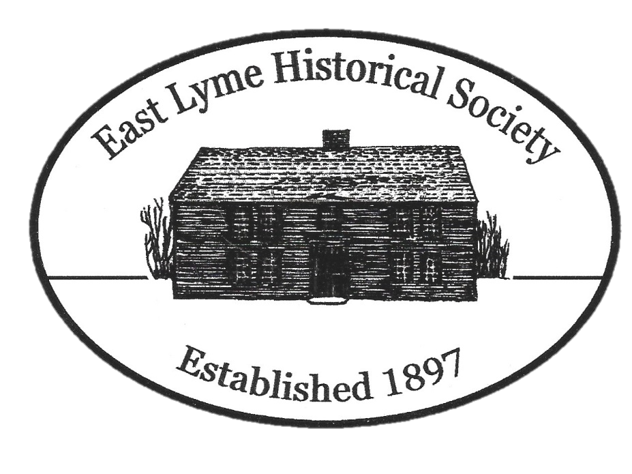For information about native peoples, visit:
The Oswegatchie Hills Nature Preserve is a great place to observe artifacts of the town’s history as well as its natural beauty. For more information, follow the link:
Friends of the Oswegatchie Hills Nature Preserve
Looking for information about old houses in East Lyme?
The Connecticut State Library has transcribed the survey forms from Census of Old Buildings in Connecticut, which was conducted as part of the Work Projects Administration in the 1930s, and digitized the accompanying photographs. They are now available at:
Nehantics
The first recorded inhabitants of what is now East Lyme were the Western Nehantics, an Algonkian-speaking tribe whose territory stretched from the mouth of the river now named for them, the Niantic River, westward to the Connecticut River.
Like most eastern tribes, the Nehantics lived in semi-permanent locations. Summers were spent near the waters of Niantic River and along the shore of Long Island Sound, both of which supplied an abundance of fish and shellfish. These were supplemented by crops of corn, beans and squash. As cold weather approached, tribe members moved to the higher grounds in the northern end of town, where longhouses, sheltered by dense forest, provided comfortable habitat through the winter.
Many tribal members converted to Christianity as a result of the Great Awakening of the 1740s. As English settlement in the area increased, so too did pressure on the Nehantics to give up their traditional lives and their land.
In the 1770s, Samson Occum and Joseph Johnson, members of the Mohegan tribe, led a group of tribal families from several New England tribes to upstate New York, to live among the Oneida. This settlement adopted the name of Brothertown. By the early 1800s, with their land holdings rapidly shrinking, the Brothertown, including many Nehantics, resettled in Wisconsin. Today, they maintain a distinct cultural community in the Fond du Lac area.
What remained of the Nehantic tribe in the East Lyme area declined through the 19th century. In 1870 the tribe was declared officially extinct, allowing their reservation land in Black Point to be sold off. John Nonesuch was the last full-blooded Nehantic known to be living in town. Both he and his sister, Mercy, married members of the Mohegan tribe. John’s son, Sciota, moved to Pennsylvania and died in 1931.
Burial grounds in the Crescent Beach area were excavated to allow shorefront homes to be built. The remains that had been disturbed were relocated to Union Cemetery, on East Pattagansett Road in Niantic. On November 5, 2006, the East Lyme Cemetery Association dedicated a new monument at McCook’s Point Park in memory of those Nehantics once buried in the area.
The Town of East Lyme, Connecticut
The Town of East Lyme, consisting of the Villages of Flanders and Niantic, was incorporated in 1839, having been set off from Lyme to the west and Waterford to the east.
Flanders was then the population center for the town, with several mills, schools and churches, as well as Caulkins Tavern along the Post Road, providing a sense of community life.
At the same time, Niantic, which occupied the relatively flat lands along the shore of Long Island Sound, was primarily sparsely settled farmland. That soon changed, however, as the fishing industry flourished in the mid 1800s. As many as 50 fishing vessels sailed from Niantic, most specializing in halibut and cod from George’s Bank. Businesses rapidly arose in support of the fishing industry, from boatyards along the Niantic River, to suppliers of cord wood, ice and bait for the boats. In 1839, only two buildings stood along what is now Main Street; in 1867, there were 32. By 1880, the waters off George’s Bank were largely depleted, and fishing ceased to be a significant industry in Niantic.
The arrival of the railroad in 1852 brought many changes to Niantic. Ease of transportation allowed manufacturing to develop, and commerce shifted from the north end of town to the south. At the same time, people seeking escape from urban summers discovered the beauty of Niantic Bay. Hotels and restaurants were built to accommodate the tourists, and summer colonies were established on land that had only recently been farmed.
As the center of commerce shifted to the southern end of East Lyme, so too did the population. Niantic grew rapidly as waves of immigrants joined those who were relocating from Flanders. By 1920, a library had been established along Main Street. The first Hall of Records was built soon after. A courthouse and a post office completed the establishment of Niantic as the center of government for the town.
Niantic also became known in this time period for its magnificent golden pink granite, veins of which run through the ridges in the south end of town. Quarrying operations provided granite for buildings and monuments throughout the country up until the 1950s.
The years following World War II saw the same explosive growth in Niantic that occurred in much of the country. Subdivisions sprang up to house the families of returning veterans, seasonal homes were converted for year round use, and schools and churches followed. The increase in population led to commercial growth, especially in the downtown area of Main Street and Pennsylvania Avenue.
As demand for shoreline property drove up real estate prices in the southern end of town, residential growth was spurred in Flanders. Commercial growth has followed, and, in time, Flanders may once again become the center of life in East Lyme.
